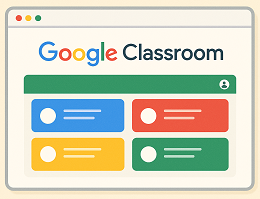One of the most effective ways to boost your students’ listening skills is by integrating YouTube videos and podcasts into your lessons. These tools provide real-life language input, natural pronunciation, and a variety of accents — all of which are essential for language learners.
Let’s explore how you can make the most of these powerful resources in your ESL classroom or online lessons.
Why Use YouTube and Podcasts for Listening Practice?
- Authentic Language Exposure
Students hear real conversations, expressions, and speech patterns used in natural contexts. - Variety of Accents and Voices
Learners can get familiar with different accents (American, British, Australian, etc.), which prepares them for real-world communication. - Flexible and Accessible
Students can listen anytime, anywhere — on their phones, tablets, or computers. - Engaging Content
Videos and audio are more exciting than traditional textbooks and keep students motivated.
Using YouTube in the Classroom
YouTube is a goldmine for English listening practice. Here’s how to use it effectively:
1. Choose Level-Appropriate Videos
- Beginner-Friendly Channels: BBC Learning English – English at a Slow Pace – Speak English with Mr. Duncan
- Intermediate/Advanced Options: English with Lucy – Rachel’s English – TED-Ed
2. Turn On Subtitles (If Needed)
Start with English subtitles to help learners follow along. Later, challenge them to listen without subtitles.
3. Focus on Listening Tasks
Before watching: Ask students to predict the topic.
While watching: Give specific tasks (e.g., “Write down 3 key phrases you hear.”)
After watching: Discuss vocabulary, summarize the video, or role-play scenes.
4. Pause and Replay
Pause for discussions, pronunciation practice, or clarification. Repeat key sections if needed.
Using Podcasts for Listening Practice
Podcasts are fantastic for improving listening comprehension, especially for learners on the go.
1. Select Podcasts by Level and Topic
- Beginner Podcasts: The English We Speak – BBC – Voice of America – Learning English
- Intermediate Podcasts: Luke’s English Podcast – 6-Minute English – BBC
- Advanced Podcasts: This American Life – TED Talks Daily
2. Set Clear Listening Goals
Ask students to listen for:
- Main ideas
- Specific vocabulary
- Tone and speaker’s opinion
3. Include Pre- and Post-Listening Activities
- Pre-listening: Discuss the topic or review vocabulary.
- Post-listening: Summarize the episode, have a group discussion, or write a short reflection.
4. Use Podcasts for Homework
Assign short podcast episodes and create follow-up exercises or discussion questions.
Tips to Maximize Learning
- Encourage active listening — not just “hearing,” but engaging with the content.
- Create a listening journal where students reflect on what they heard.
- Combine listening with speaking and writing tasks to reinforce skills.
Example Activities
- Video Dictation: Play a short clip and have students write what they hear.
- Podcast Role-Play: After listening, students act out a conversation inspired by the episode.
- YouTube Vocabulary Hunt: Pick 10 new words from a video and create a mini-dictionary.
Using YouTube and podcasts in your English teaching routine not only improves listening skills but also brings the language to life. These tools expose learners to real voices, authentic situations, and cultural context — which are often missing from textbooks.






